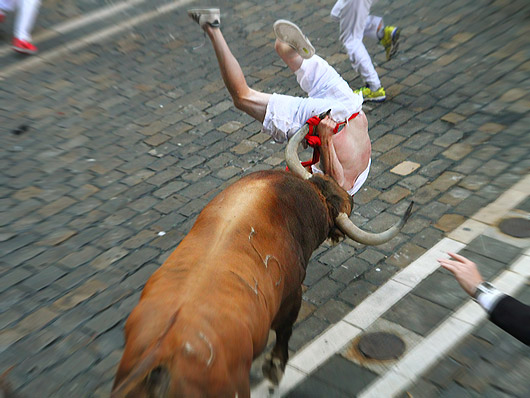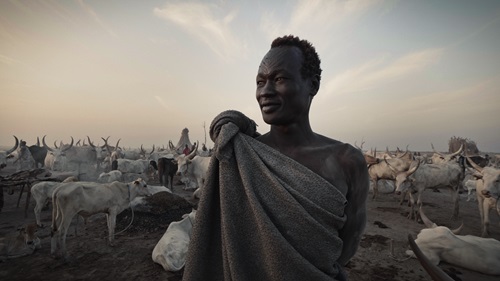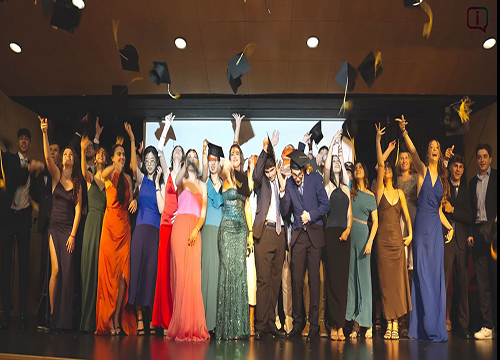San Fermin especial words for the main events

Chupinazo
The opening of the festival is marked by setting off the pyrotechnic chupinazo (or txupinazo in Basque language). The rocket is launched at 12:00 noon on 6 July from a city hall balcony with thousands of people celebrating the act in the city hall square and other locations in Pamplona. The chupinazo has officially marked the beginning of the fiesta since 1941.
Riau-Riau
The Riau-Riau was a mass activity held on 6 July. The members of the city council parade from the City Hall to a nearby chapel dedicated to Saint Fermín with participants dancing to the Astrain Waltz along the way. The ritual was introduced in 1911 by Ignacio Baleztena Ascárate. The procession was removed from the festival calendar in 1992 for the sake of public order, as political activists used the "Riau-Riau" to promote clashes with authorities. Protesting youths would often block the way and it often took up to five hours for the city councilors to walk the 500 meters to the Saint Fermin chapel. Nevertheless in recent years it has been held unofficially without the participation of the members of the city council. In 1996 and 2012 there were two failed attempts to restore the original act with the participation of the city council, both of them being cancelled due to the violent clashes with some participants.
Saint Fermin procession
The key day of the festival is 7th July, when thousands of people accompany the 15th-century statue of Saint Fermin through the old part of Pamplona. The statue is accompanied by dancers and street entertainers, and different political and religious authorities including the city mayor. During procession a Jota (an ancient traditional dance) is performed for the saint, a rose is offered in the Saint Cernin well, and the "gigantes" (enormous wood-framed and papier-mâché puppet figures managed from inside) dance and twirl while the cathedral bell named María (Mary) peals.
Struendo
El Struendo ,The Roar is a single day event with more than 50 years of tradition. It has been purposely left outside the official program and each year is celebrated on a different day, usually on a weekday so as to keep the crowds manageable. People gather at 11:59 pm at the Town Hall and make as much noise as possible for several hours mainly with drums but also bowls, whistles or any other objects.
Pobre de mí
After nine days of partying, the people of Pamplona meet in the City Hall Plaza at midnight on 14th July, singing the traditional mournful notes of the Pobre de Mí ('Poor Me'), in a candlelit ending. The city mayor closes the festival with participants lighting a candle and removing their red handkerchief as the song is played by the local band, followed by a fireworks display at the city hall. This closing ceremony tradition started out in the 1920s.
Running of the bulls
The running of the bulls (In Spanish encierro) involves hundreds of people running in front of six bulls and another six steers down an 825-metre (0.51 mile) stretch of narrow streets of a section of the old town of Pamplona. The run ends in the Pamplona's bullring taking a mean time of around 3 minutes where the bulls would be held until the afternoon's bullfight when they would be killed. Bullruns are held between 7th and 14th of July.
The event begins at 8 a.m. when a first firecracker is lit to announce the release of the bulls from their corral. Before the year 1924 it started at 6 and at 7 between 1924 and 1974. Runners gather earlier at the beginning of the itinerary to ask for the protection of the Saint by singing a chant three times before a small statue of San Fermin which has been placed in a raised niche in a wall. A second cracker signals that the last bull has left the corral.





Sin Comentarios